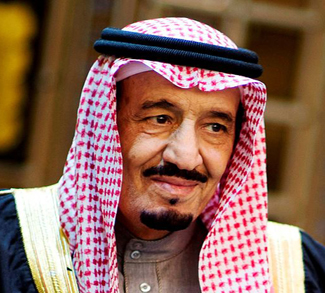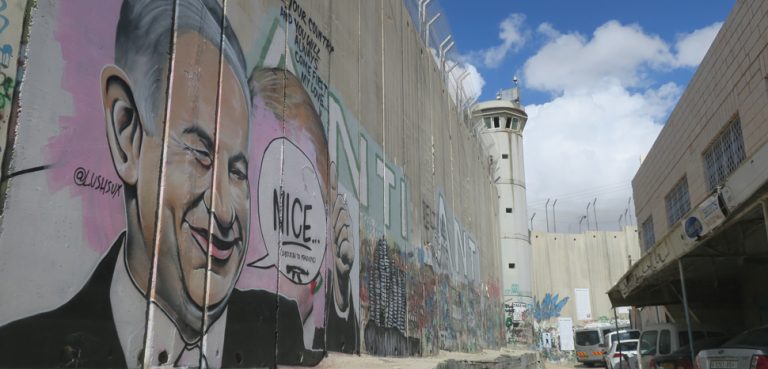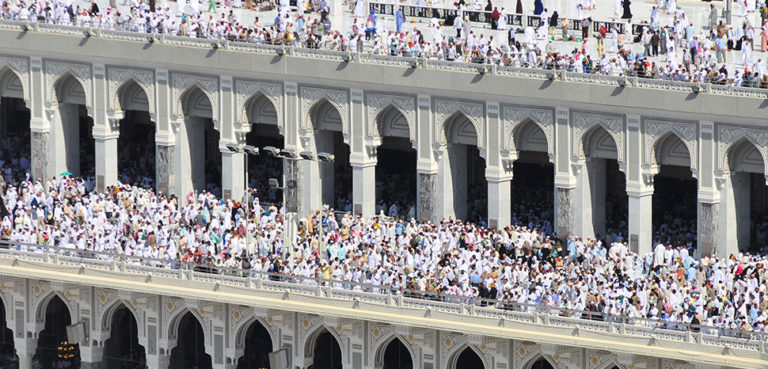Background
As of today, the humanitarian pauses or “humanitarian ceasefires” in the Gaza conflict, which began on 24 November, mediated on behalf of the United States, Egypt and Qatar are getting into their last 4th day. The agreement is fragile and has no clear path to continue on a permanent basis.
The terms of the humanitarian pause in military operations are:
- Four days of cessation in fighting between Israel and Hamas
- Israel to stop air traffic in southern Gaza Strip airspace, each day for six hours between 10am and 4pm
- Fifty hostages held by Hamas will be released over four days in exchange for 150 Palestinian detainees
- Free movement along the Salah al-Din Road
- Humanitarian aid trucks to enter Gaza with aid and fuel
The issue of overflights is crucial, as releasing prisoners with Israeli drones overhead could reveal the locations of remaining captives.
Negotiations between Israel and Hamas, despite being sworn enemies, commenced shortly after the attack on October 7. Progress was slow, in part due to the necessity of relaying communications through Cairo or Doha for every detail, such as obtaining a comprehensive list from Hamas for the individuals to be released, as reported by US officials.
On Wednesday November 22, the President Biden engaged in discussions with Prime Minister Netanyahu regarding the hostage release agreement. White House statements outlining the phone calls revealed that President Biden also had discussions with Sheikh Tamim bin Hamad al-Thani, the Emir of Qatar, and Abdel Fattah el-Sisi, the President of Egypt. During the conversation with Prime Minister Netanyahu, President Biden addressed the humanitarian pause, emphasizing its role in facilitating the influx of much-needed humanitarian aid into Gaza.
On November 24, the Palestine Red Crescent Society reported the arrival of 196 trucks of humanitarian aid, marking the most substantial convoy into Gaza since the beginning of the war.
Qatar’s Foreign Ministry stated that an operations room in Doha will oversee the truce and hostage release, maintaining direct communication channels with Israel, the Hamas political office in Doha, and the International Committee of the Red Cross (ICRC).
The entrance of aid into Gaza is also pivotal for Hamas to achieve its goal of preventing Israel from depopulating the north of the Gaza Strip.
The commitment of Hezbollah to the ceasefire is unclear; their compliance would signal de-escalation, reducing the risk of the conflict expanding regionally.
Hamas stated that Israel has agreed to halt air traffic over northern Gaza between 10am and 4pm daily, and over southern Gaza throughout the entire truce. Additionally, Israel committed not to launch attacks or make arrests in Gaza, allowing people to move freely along Salah al-Din Road, the main route used by many Palestinians who fled northern Gaza during Israel’s ground invasion.
The chief Qatari negotiator, Mohammed Al-Khulaifi, stated that there would be absolutely no attacks during the four-day humanitarian pauses. He emphasized ‘no military movements, no expansion—nothing of the sort.’
Hamas plans to release 50 women and children over a four-day period, part of a group of around 240 individuals captured during the October 7 assault on southern Israel. In return, Israel will release a total of 150 Palestinians.
Qatar stated that the International Committee of the Red Cross (ICRC) is actively involved in Gaza to aid in the hostages’ release. On Friday, the 13 hostages were transported through the Rafah crossing to Egypt, the sole country, aside from Israel, sharing a border with Gaza, and then following an identification process were sent to Tel Aviv to undergo medical and physiological examinations at a hospital. At the same time at the Rafah border, trucks carrying humanitarian aid entered the Gaza Strip.
Despite expressions of hope from countries like Qatar, world leaders and international humanitarian organizations that the truce might lead to a lasting ceasefire – both Israel and Hamas have conveyed their determination to continue the fight.
In the likely event that the war resumes, Hezbollah is expected to escalate its involvement further, applying pressure on Israel for a permanent ceasefire and to abandon its attempts to weaken Hamas, potentially resulting in an expanded conflict.
United States and Qatari officials are urging Israeli counterparts to consider prolonging the initial four-day pause in fighting if Hamas commits to releasing more than the initially promised 50 hostages. The details of the agreement, including terms for extending the pause, are still being negotiated. One of them is that the humanitarian pause will be extended by a day for each additional group of 10 hostages released by Hamas.
Analysis
Israel is facing yet another intelligence failure as it struggles to obtain substantial information about the captives held by Hamas, compounding the disastrous failures surrounding October 7. With accurate intelligence, Israel would have opted for military action in order to secure the release of the captives.
The agreement demonstrates that Hamas remains a coherent organization despite 47 days of intense Israeli aerial and ground attacks. Hamas retains the capability to launch significant missiles into Israel, maintain effective command and control, and sustain military operations. Israel’s stated goal of breaking Hamas by military operations and achieving conflict cessation appears impractical.
The agreement highlights the challenges primarily faced by Israeli aerial power in locating hostages and Hamas main positions. Despite its efforts, Israel was unable to dismantle Hamas, citing the need for more time to address the situation.
The agreement permits the entry of fuel and essential supplies, a move Israel had initially aimed to limit. With the influx of aid, the likelihood of Israel achieving its initial presumed objective of expelling Palestinians from Gaza diminishes.

cc Wikipedia
After 47 days of conflict, Israel has not been able to enter the core of Gaza City, where urban warfare would be most intense, and it hasn’t reached the southern part of the Gaza Strip, still under Hamas governance. Israel is not so close as planned in accomplishing its stated goal of destroying Hamas.
President Biden’s priorities for unity within the Democratic Party and Israel’s failure to achieve its military objectives, despite extensive bombardment, reduce the likelihood of continued unconditional US support for Israel in this conflict. This dynamic might expedite the conclusion of the war or prompt Israel to escalate further to bring the US administration back in alignment.
Ministers from Itamar Ben Gvir’s Jewish Greatness Party declined to vote in favor of the humanitarian pauses in fighting and hostage exchange. The humanitarian pause agreement has created instability within the Israeli government, with some interpreting it as a demonstration that Israel could have negotiated the release of prisoners all along. Others see it as a sign of Israel’s unwillingness or incapacity to achieve military success.
This solidifies Iran’s confidence in supporting Hamas, tempting it to consider providing even more support for its allies, for example, the Houthis in Yemen and Hezbollah in Lebanon.
It remains uncertain whether the rocket and drone attacks on Israel by Houthis – a pro-Iran militant outfit in Yemen – and attacks on the US bases in Iraq and Syria would cease for the duration of the humanitarian pauses.
The unfolding scenario marks a success for Cairo due to the diminished probability of Israel effectively displacing Gazans into Egypt. Addressing a significant Egyptian economic stability and national security concern, this outcome aligns with Egypt’s aim to prevent an escalation of combat in the northern Sinai region.
It also marks a win for Qatar, the primary financial supporter and crucial negotiating partner of Hamas, as it emphasizes Qatar’s diplomatic relevance and the ongoing necessity for the country to host Islamist militants, particularly to facilitate dialogue when required by the international community and the West.
The ceasefire is crucial for Jordan as well, which is always sensitive to the possibility of new mass migrations. Specifically, there is apprehension that a similar attempt to displace by Israel in the West Bank could destabilize Jordan. The West Bank shares a border with Jordan, leading to a similar dynamic as Egypt-Gaza.
Saudi Arabia is cleverly remaining outside any official involvement in the conflict and focusing on its international reputation-building and new strategic projects which will help advancing Saudi leadership in the region. The approach is facilitated by the fact that the Kingdon’s rulers don’t like Hamas. In reality, many of the governments in the Middle East and Northern Africa don’t like it either. The leaders of Egypt, Jordan, United Arab Emirates and Bahrain see Hamas and its revolutionary brand of so-called “political Islam” as a threat to their secular rule.
On Saturday November 25, following the commencement of the truce, there were documented instances of new missile launches targeting Israel from a distance of 2,000km (1,240 miles). Despite these attempts, none of the projectiles successfully penetrated the robust defensive measures in place, including the presence of US Navy destroyers in the Red Sea, an Israeli Navy corvette patrolling international waters near the top of the Gulf of Aqaba, and Israeli Air Force aircraft on standby to intercept any projectiles that might breach the maritime defenses.

cc Wikipedia
A foreign affairs meeting held last week at Downing Street confirmed that the UK’s foreign policy regarding the Israel-Hamas conflict is in alignment with its allies, including the US. In practical terms this translates into support for humanitarian pauses, releases of hostages held by Hamas, and military operations against Hamas.
Prime Minister Sunak and members of the Cabinet refrained from mentioning a ceasefire in their statements as a pre-requisite for a cessation of hostilities between Israel and Hamas.
UK Foreign Secretary David Cameron visited Jerusalem and Ramallah on Thursday 24th and Friday 25th November, where he met with Israeli President Herzog, Prime Minister Netanyahu, and leaders of the Palestinian Authority. In this instance the UK and Lord Cameron once again showed support for Israel and voiced concerns about civilian casualties in Gaza.
While visiting the site of the mass attack from Hamas on October 7, Cameron stated: “There is never any excuse for this sort of hostage-taking. All the hostages should be released, but I hope that everyone who is responsible and behind this agreement can make it happen, to bring relief to those families, including, of course, there are British nationals who have been taken hostage.”
During his visit to the West Bank, Secretary Cameron pledged for more support from the British government: “I am proud that a fourth UK flight carrying critical supplies landed in Egypt today, and I can announce new £30 million of funding which will be spent on vital aid such as shelter and medical provisions. It is vital to protect civilians from harm, and we are urgently looking at all avenues to get aid into Gaza, including land, maritime and air routes.”
John Casson, formerly Cameron’s chief foreign policy adviser in 10 Downing Street, disapproved of Netanyahu’s strategy, warning that it was fostering anti-Israel sentiment among Palestinians. Additionally, he advocated for a renewal of leadership within the ageing Palestinian Authority. Regarding the two-state solution he stated: “The current approach is not making the Israelis safe and secure for the long term but creating a traumatized generation of Palestinians and teaching them that Israel is their enemy, and that it is undermining the prospects of a two-state solution and deliberately dismantling it.”
Meanwhile, Prime Minister Netanyahu stated: “We’ll continue with our war aims, namely to eradicate Hamas, because Hamas has already promised that they will do this again and again and again. They’re a genocidal terrorist cult. There’s no hope for peace between Israel and the Palestinians, between Israel and the Arab states, if we don’t eradicate this murderous movement that threatens the future of all of us.”Looking ahead, if an official extension is not declared, there is a high probability of renewed hostilities breaking out on Monday night, once the final groups of hostages have been released and the last aid trucks have arrived. With the realization that the last prisoner exchange has concluded, soldiers may not feel compelled to wait for the official expiration before taking action. Any gunfire or missile strike directed at or in proximity to the existing front lines on Monday night is likely to serve as a signal for all fighters to resume warfare with full force. To prevent the discontinuation of the truce, the crucial step is to announce its extension before the last captives are liberated today afternoon.
On Sunday November 26, General Herzi Halevi who is Israeli Chief of General Staff warned in his statement that once the truce expires the military operations will continue in Gaza: “…[we] will return to our operations with determination, for the continued release of the hostages and the complete dismantlement of Hamas.”
Despite increasing international criticism, the United States and the United Kingdom’s concerns over civilian casualties, and the ongoing humanitarian crisis in Gaza, Israel remains resistant to calls for a longer-term or permanent ceasefire with political mediation. Prime Minister Netanyahu clearly stated that Israeli military operations will continue “until victory.”




